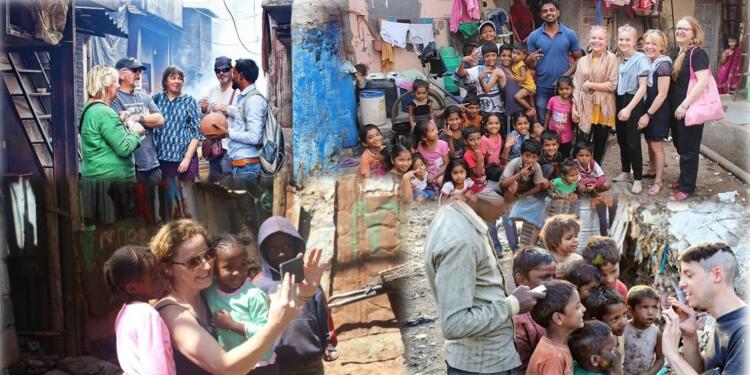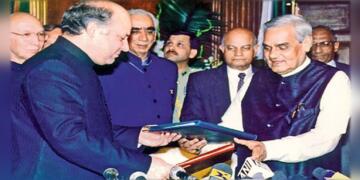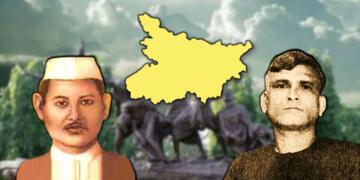There is a hollowness in prosperity. Those who have risen above the rank know it. It does not show the full picture of humanity. Humanity is much more complex than gratifying consumer instincts. A large part of it is also poverty, hunger, malnutrition, tribal warfare and much more. All of this is visible in slums. Prosperous people looking for thrill in their lives want to see all of it for a brief moment. No wonder, slum tourism has become a hot word in the tourism industry.
Slum tourism: Originated in Britain, transferred to the USA
Slum tourism as a concept that began in the 1800s. For the first time in their history, the Brits had witnessed successive generations of prosperity. Possibly, to gauge their rankings in hierarchy, rich Londoners started to visit the East end of the city in the 1840s. The area was still a slum.
Within a decade, people slightly poorer than rich and richer than slum dwellers also copied the trend. In fact, the phenomenon got so much vindication from the British Royalty that Police used to escort affluent people for this bizarre and sadistic kind of tourism.
By the 1860s, the Americans had started to challenge British dominance in affluence. The race resulted in competition on the poverty scale as well. The Brits wanted to compare their own slums with that of America. Rich ones of the bunch literally flooded New York city, San Francisco, Manhattan and other centres of wealth in the US.
The Brits did not visit financial centres in the cities. They visited places like brothels, saloons, and opium dens to see their countermeasure. The Bowery, on the eastern edge of Five Points in New York was particularly infamous for brutal murders due to taverns, dance halls, oyster bars, and gambling establishments.
No wonder, slum tourism got documented in tourist guides as well. However, its first formal and authentic documentation took more than 4 decades to come when slumming was included in the 1884 edition of the Oxford English Dictionary.
Colonies became the new hot word in 1980’s
As if this was the moment tourists were waiting from. By the 1890s, Tourism for the sake of comparison to the industrialised economy started to dive down. It was replaced by a more sinister form of that. Now, these people started to visit their own colonies.
This subset of slum tourism has another angle to it. It is that of pride. Foreigners visited these places to see the exploits of their forefathers. That is how places like Asia, Africa and Caribbeans went on to become hotbeds of slum tourism.
After the wave of independence movements after the second world war, enthusiasm did slow down. But that was only because their consumer capacity had taken a hit. However, as soon as the spendings revived, the slum tourism gathered momentum.
Now, the local governments also sensed an opportunity in it. In the post WWII world order, liberal media was hell bent on exposing the fallacies of their own governments. That is what rule of law and free speech means.
Slum tourism helped in ending apartheid
Newly freed countries sensed an opportunity. People of these countries sensed an opportunity to gain more aid. They started to escort media houses to these places in order to highlight the havoc their governments had caused in previous centuries. A huge part of credit for ending apartheid regime in Africa is directly attributable to these slum tourists.
Black Africans used to organise township tours to give a deep insight into their way of living to white people. Khayelitsha, Cape Town, South Africa; Kibera, Nairobi, Kenya are some of the major hubs of slum tourism. Over the decades, the sympathy wave for blacks resulted in international support for Nelson Mandela and his ilks, ending apartheid.
Slumdog Millionaire and Dharavi
In Asia, India and Pakistan were (still are) main centres of vulture tourism. Throughout the decades, places like Dharavi in Mumbai and Orangi Town in Karachi became hubs of it. Dharavi in fact got international fame due to being highlighted in movies such as slumdog millionaires and many other documentaries. Foreign media houses have shown it as a representative of India.
Slumdog millionaire in fact resulted in a huge surge in foreign tourists visiting Dharavi and other slums in different metros of India. Somehow, due to attention, Dharavi has been in a better shape. The small industries located in this area have a turnover of $1 billion. Countries all across the world are studying about it.
Though slum tourism has done some good, it is majorly an evil practice. It is celebration of human suffering which should not be allowed in any manner whatsoever.
Support TFI:
Support us to strengthen the ‘Right’ ideology of cultural nationalism by purchasing the best quality garments from TFI-STORE.COM


































